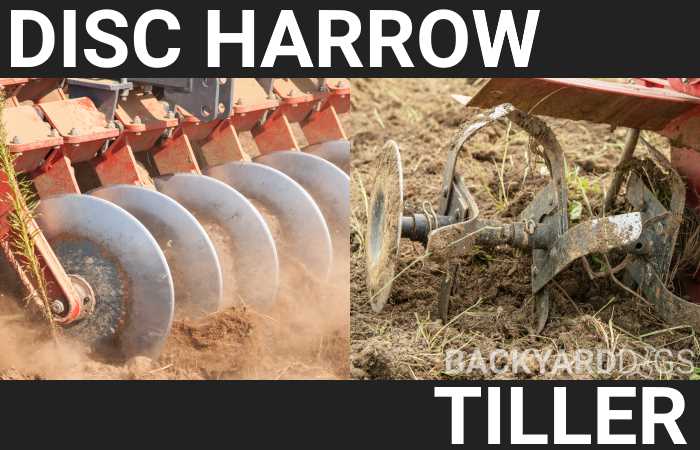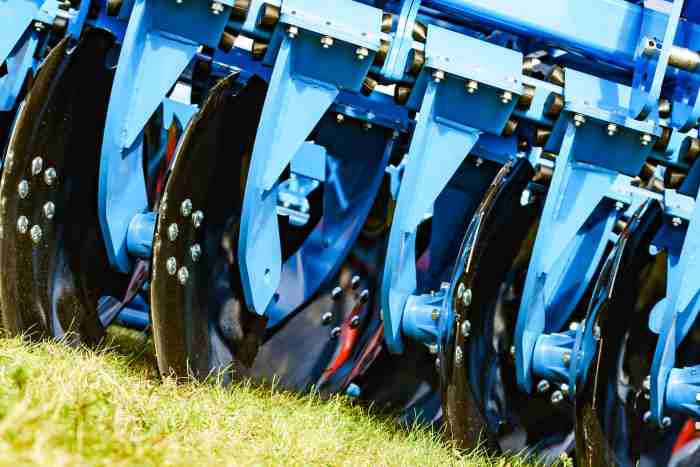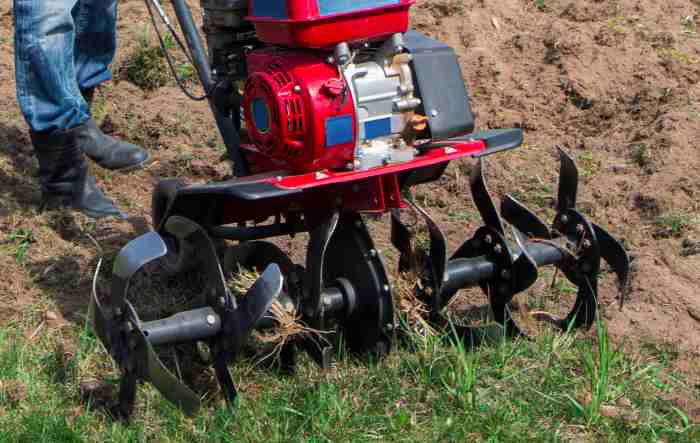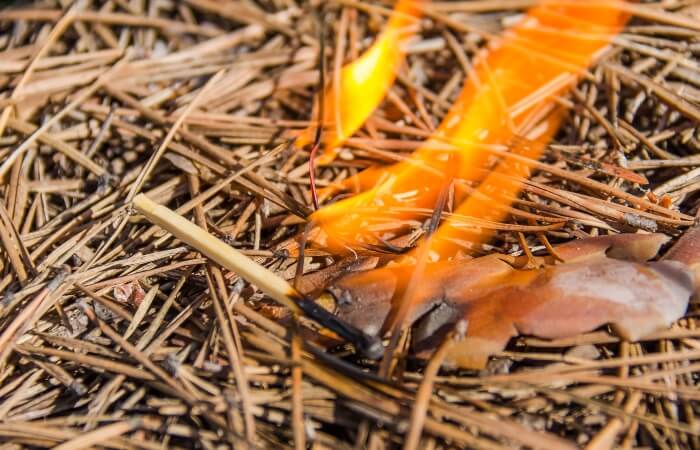Ready to prep your garden soil, but don’t know if a disc harrow or tiller will do a better job?
While both pieces of equipment break up the soil to get ready for seeding, they do not perform equally.

Inside this guide, I clarify the uses of a disc harrow and tiller, the types of soil prep they perform, and the pros and cons of using them in your home garden.
Once you understand the function of a disc harrow vs tiller, you’ll be able to choose the best one to assist you in prepping your garden for planting.
What Do You Use A Disc Harrow For?

Growers use a disc harrow to break up clumps of dirt or topsoil crust and to even out the surface of the field where they plan to grow crops.
Technically, a disc harrow isn’t for deep soil cultivation, but as more of a soil “finishing” tool for use before planting. The machine is also beneficial for incorporating surface application fertilizers and herbicides.
The implement attaches to a tractor that pulls it back and forth across the area they wish to plant.
A secondary use for a disc harrow is for chopping up weeds that grow between planting seasons and for incorporating crop remainders into the soil after harvest.
Types Of Harrowing
The three different types of disc harrowing consist of:
- Single-action harrowing
- Double-action harrowing
- Offset disc harrowing
Each type of disc harrowing aid in creating a look and feel of soil specific to your needs.
Single-action disc harrows have sets of discs that angle in opposite directions along the cylinder, or “gang,” that holds them. When the equipment crosses the soil, it throws dirt in opposite directions at the same time, which creates furrows and ridges in the field.
Double-action, or tandem, disc harrows have two gangs, one in front of the other. The discs of the first gang throw the soil in one direction, while the next gang of discs throws the soil in the opposite direction.
Offset disc harrowing pulls two gangs of discs set offside of the tractor. This configuration means the equipment does not pull directly behind the tractor and allows access to areas and corners where a normal disc harrow can’t reach.
Using A Disc Harrow For Home Gardening
For home gardeners, a disc harrow can be beneficial but also present some disadvantages. You can purchase disc harrows for small spaces that can attach to lawn tractors or ATVs.
PROS
- Easier to pull over the soil
- Wide gang allows for faster soil preparation
- Less expensive to maintain
- Handles rocks without jamming
CONS
- Hard to maneuver in small spaces
- Only penetrates a few inches into the soil
- Need to make several passes for best results
- Puts more strain on the tractor engine
A compact disc harrow can be a great compliment to your other gardening equipment if you need to work large garden plots and have a tractor or ATV available.
What Do You Use A Tiller For?

A tiller is made to break up tough, compacted soil. Think of a tiller as the tool necessary to clear and loosen up new ground for planting.
Tillers are ideal for breaking apart large clumps of soil into a granulated material for seeding or setting new plants.
I use a tiller when I want to expand my garden plots. I also use one when I let a garden plot lie fallow but want to avoid the topsoil from getting crusty or laden with unwanted plant growth.
Related | How To Rototill
It’s important to note that a tiller is not made to run through overgrown fields without first mowing or bush hogging the area. Check out the following video to get an idea of when to till without clearing brush first.
A tiller can grind up mowed foliage to a point, but the design of a tiller blades increases the odds stringy items such as roots or plant fibers will catch inside the equipment. This tendency leads to annoying work stoppages to clear debris.
The last word of caution on using a tiller is to watch out for rocks.
Always clear visible rocks before tilling. Even golf ball-size rocks can jam up inside the tines, while larger stones may bend or break them.
Related | How To Remove Rocks From Yard
Types Of Tilling
There are three types of tilling, each with a specific purpose in mind when it comes to soil preparation.
Conventional Tilling
Conventional tilling refers to turning over the soil after harvest, incorporating crop remains, and loosening compacted soil.
The downfall to conventional tilling is that it can erode the topsoil and reduces the mineral and nutrition levels for the next crop you grow.
Conservation Tilling
Conservation tilling limits the area of soil disruption to the bare minimum, which allows space to set the seeds or plants, but doesn’t try to remove or bury all the old crop remains.
Conservation tilling slows down soil erosion. The natural breakdown of old harvest remains throughout the growing season increases organic material and nutrients, so plants grow better.
No-Till Tilling
Just like it sounds, the no-till method is the least invasive ground preparation growers use for planting.
The technique involves no turning over of old crop residues into the soil, nor of digging too deep to set seeds.
Since this method increases natural carbon levels in the soil and dramatically reduces soil erosion, no-till growing practices are becoming increasingly popular around the world.
Related | Cultivator vs Tiller
Using A Tiller For Home Gardening
For large-acre planting areas, a tractor attachment tiller is helpful if you can afford it.
Most gardeners opt for a walk-behind power tiller, which takes more time and physical effort, but allows for better control and fits into small spaces.
Power tillers feature two wheels with either a front-tine or rear-tine design. Before investing in a tiller, let’s discuss the pros and cons of home garden use.
PROS
- Rolls over the soil easily
- Fits into small areas, even between garden rows
- Much more control over final soil appearance
- Gas or electric models available
- Different size widths and tine configurations to suit your needs
- Digs deeper into the soil
CONS
- Rocks and weeds can jam in the tines
- Takes longer to cultivate an area since blade/tine width is small
- Need to move it slowly for better soil finish results
- More prone to breakdowns and costly to fix
A tiller gives you more flexibility when it comes to home gardening tasks and comes in a wide variety of style choices and price points.
I operate a wide-head, gas-power tiller with larger tines for “rough” work. I also inherited a compact-head electric version with a finer set of tines that leaves the soil with a nice consistency.
In Summary
Getting ready for planting season requires proper soil cultivation. Whether you choose to achieve that by using a disc harrow, a tiller, or both is up to you.
Serious growers and beginner gardeners alike benefit from using tools that increase productivity over manual turning of the soil with a spade.
Now that you understand the differences between disc harrow vs tiller soil preparation and the pros and cons of each tool, you can get your ground ready for planting and soon be enjoying fresh homegrown produce!












